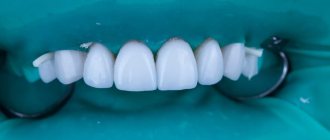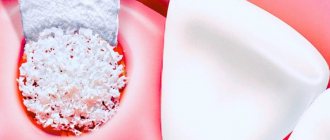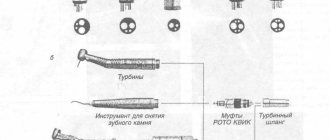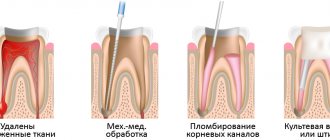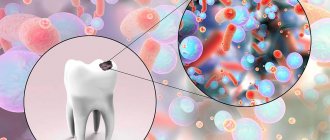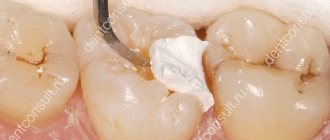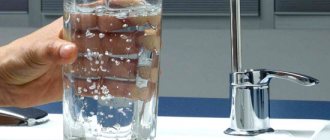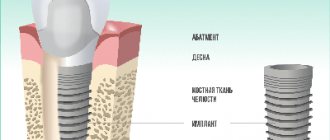Sterilization is the process of complete disinfection of instruments, during which all microorganisms, as well as their spores, are killed.
Everything that comes into contact with the patient’s biological fluids and is used repeatedly is subject to sterilization. Human immunodeficiency virus, hepatitis B and C, malaria, typhus – this is an incomplete list of diseases that are transmitted through blood. Sterilization is necessary to prevent their spread.
At the Karmen-Med clinic, all instruments are subject to mandatory sterilization. Regardless of the manipulation performed, the dentist always has only clean instruments in his hands. Our patients do not have to worry about their health.
Sterilization methods used in dentistry
Sterilization is the general name for any disinfection process, regardless of the method of removing microorganisms. There are several such methods:
- Mechanical – removal of microorganisms by mechanical action. For example, liquids are passed through special filters that retain particles of certain sizes. Microorganisms can be mechanically removed from objects or surfaces by cleaning, wiping, and sweeping. The method is unreliable and is used in medicine only as a preliminary step.
- Biological - sterilization with antibiotics, is rarely used because it does not affect all pathogens.
- Chemical is a method of disinfection by applying special solutions or gas treatment. Gaseous ethylene oxide or formaldehyde is used as the latter. Acids with oxidizing agents, detergents, halogens and aldehydes are used as solutions. Most are known antiseptics, such as chlorhexidine or betadine. Used for processing cabinets, surfaces, and apparatus.
- Microwave - in this case, disinfection occurs in a special microwave sterilizer. Microorganisms die under the influence of an electromagnetic field. The method is rarely used in medicine.
- Physical - a method that includes exposure to temperature, pressure or ionizing rays. The most commonly used sterilization is high temperatures (in a dry-heat oven) or high temperatures and pressure (autoclaving). Most tools and materials can be cleaned using these methods. Ionizing radiation is used in factory conditions in the manufacture of sterile products.
The essence of proper oral hygiene
Proper oral hygiene is a rather complex process. On the one hand, you can brush your teeth twice a day, morning and evening, but this is not enough, since a toothbrush removes up to 80% of plaque. The rest accumulates between the teeth, in hard-to-reach places on the sides. Dentists also recommend using dental floss, which will improve the percentage of plaque removal by another 10%.
Innovative technologies are interfering with the process of oral hygiene, so it would be a good idea to purchase electric brushes. However, with all this, it is simply impossible to remove plaque or food debris from the oral cavity 100%.
Many people wonder whether it is possible to do without professional teeth cleaning, which is offered in any clinic. The answer is clear - if you want to reduce the risk of developing infections in the oral cavity, then no. Subject to standard hygiene rules, such a procedure is recommended once a year. If you approach the issue with special care, paying more attention to hygiene, then you will need to visit the dentist once every two years, but there is no way to do without it.
Stages of sterilization
Before proceeding directly to sterilization, it is necessary to carry out preliminary preparation. Tools and materials are washed, cleaned, dried - and only then sterilized. The processing steps for the toolkit are as follows:
- Disinfection. At this stage, the items to be disinfected are placed in a disinfectant solution. Exposure time depends on the solution and type of instrumentation.
- Washing. Tools and materials are removed from the solution, washed under running and then under distilled water. Some instruments can be cleaned mechanically using brushes. If the instrument has nicks or nicks, it is recommended to disinfect it and wash it in a special apparatus under ultrasound.
- Drying. The instrument is treated with steam and waited until it dries completely.
- Final sterilization. The stage depends on the method of processing the tools. Items are placed in a special package or container and then sterilized. There must be an indicator near them that will show that the required temperature or pressure has been achieved. After all stages, the instruments are stored under ultraviolet lamps or in individual packages so that they remain sterile.
Sterilization of dental mirrors
Treatment of dental mirrors. The design of the instrument, usually used in outpatient dental appointments, consists of a mirror with a diameter of 22 mm or 24 mm in a metal frame, permanently mounted on a rod that is screwed into a metal handle.
There are two types of mirrors: concave, which magnifies the image of the object in question, and flat, which gives a true reflection of the object.
Removable design of dental mirrors The instrument is used for illumination and inspection of the working field that is inaccessible by direct examination (carious cavities, anatomical fissures of teeth, oral mucosa, periodontal pockets, for photography). The instrument is also used to protect the soft tissues of the oral cavity when working with rotary instruments at high speeds. In clinical practice, large-diameter dental mirrors are also used - 38 mm and 50.8 mm for intraoral and extraoral photography, demonstration to the patient, and to control the parallelism of occlusal surfaces. During the examination or treatment, the dental mirror comes into contact with the oral mucosa, wound surfaces, oral fluid and blood. Therefore, the instrument must be sterilized after its intended use. It is necessary to take into account the fact that the instrument is disassembled into two components (the mirror itself and the handle), therefore, sterilization of the instrument must be carried out in disassembled form. Instrument sterilization depends on the materials used during production. For example, the body of Hu-Friedy mirrors is made of stainless steel, rhodium plating is applied to the surface, and silicone glue is used to fix the mirrors. This allows the manufacturer to recommend sterilizing mirrors in an autoclave at a temperature not exceeding 140°C, or in a dry-heat oven at a temperature not exceeding 170°C for 1 hour. Domestic manufacturers and some foreign companies indicate that mirrors deteriorate from boiling and the use of high temperatures. Therefore, it is usually recommended to subject them to cold (chemical) sterilization. Mirror handles can be sterilized using any available method. Considering the above, it is recommended to sterilize dental mirrors in the following order : 1. After use, the instrument is disassembled (disconnect the mirrors from the handles) and washed in running water. 2. Preliminary disinfection of mirrors is carried out by using one of the disinfecting solutions: 3% hydrogen peroxide solution - for 80 minutes; 0.5% alcohol solution of chlorhesidine - for 15 minutes; ethyl alcohol 70° - 30 minutes; aqueous-alcoholic solutions of plivasept, dezin - 30 minutes. 3. Pre-sterilization cleaning. Mirrors are completely immersed in a washing solution with the appropriate exposure time (3% sodium bicarbonate solution, Veltolen 1.5%, Clindesin-enzyme 0.5%, Biolot 0.5%, Sulfanios 0.4%, etc.), excluding the boiling method for mirrors 4. Sterilization of mirrors is carried out chemically (6% hydrogen peroxide, 8% Lysoformin-3000, Clindesin-oxy, etc.), physical (autoclaving at temperatures from 110°C to 134°C) or gas method (in an ozone sterilizer - 40°C WITH). 5. After sterilization, the mirrors are transferred to a sterile tray and stored under a sterile napkin during the work shift or placed in a container with an ultraviolet irradiator. 6. When using chemicals for sterilization that allow you to combine disinfection and cleaning in one stage, for example “Avansept”, mirrors after exposure in a washing-disinfecting solution are washed with swabs or brushes, and then thoroughly washed in distilled water and stored in accordance with point 5. Sterilization of dental mirrors and metal handles can be carried out separately by different methods.
You might be interested in:
- Disinfection of impressions, dentures, products
- Hand disinfection, hand washing rules
We recommend reading:
- Disinfection and sterilization of dental handpieces
- Sterilization, definition, methods, quality control
- Pre-sterilization cleaning, stages, methods, quality control, means
- Disinfection in dentistry, methods, means
Features of working with different dental instruments
In dental practice, working with instruments involves distinctive features of sterilization. Instruments vary among dentists of different specializations.
- Endodontic instruments. Most endodontic instruments cannot be sterilized. They are disposable. After use, they must be disinfected and disposed of as biologically hazardous waste. Disinfection is necessary to ensure that pathogenic microorganisms cannot penetrate from the instruments to the surfaces with which they will come into contact. For example, they did not contaminate the soil when dumping hazardous waste. For each patient, they take their own individual disposable instrument. Packages are usually opened in the presence of the patient.
- Therapeutic dentistry. Instruments undergo all stages of sterilization. The only difference is the sterilization of dental handpieces. They cannot be soaked in a disinfectant solution. Therefore, the tips are manually washed with a solution, dried, lubricated, packaged and sent to an autoclave.
- General purpose kits. The disposable components of such kits are used personally for each patient, then disinfected and disposed of. But most tools are reusable. They are processed according to all stages of pre-sterilization treatment, and then placed in a dry heat or autoclave. Metal tools are usually heat treated. Objects with non-metallic parts - by pressure.
Dental mirrors
The main differences between dental mirrors for working with an operating microscope are their glare-free nature and the ability not to distort the object.
- Glare-free. As a rule, anti-reflective properties are ensured by applying a reflective layer to the surface of the glass, and not under it. To protect the mirror surface from scratches and extend its service life, rhodium alloy coating is used.
- No distortion. The mirror must be flat, perfectly focused, must display the object once and not blur the contours.
Visual illustration (Fig. 6): HR Front mirror (R?DER, Germany), Aesculap mirrors (Germany)
Fig.6. RaCe NiTi instrument and flat mirror for microscope. Please note that the tip of the file is directly reflected in the mirror due to the fact that the reflective layer is applied ON the surface of the glass, and not under it
The range of dental mirrors that meet these requirements is quite wide. Below are some examples with characteristic features: special purpose mirrors (Fig. 7c, and general purpose mirrors (Fig. 6, 7a, 9).
Below are some examples with characteristic features: special purpose mirrors (Fig. 7c, and general purpose mirrors (Fig. 6, 7a, 9).
- Double-ended mirror with rhodium coating and endodontic ruler (Fig. 7 a). Its use optimizes the treatment process: the assistant wipes one of the mirrors, and the dentist can work on the other without interruption (watch the video demonstrating the ergonomics of this approach).
- Various clinical situations require appropriately sized instruments for specific tasks (Fig. 7 b). Macro mirror, 50 mm in diameter, is used for examinations and large restorations in the anterior region.
- Special microsurgical (endodontic) mirror MEGAmicro (HAHNENKRATT, Germany). It can be round or rectangular in shape (Fig. 7 c, d). Typically, the mirror layer is polished metal; and in this example it is a precious stone. This unique feature improves the quality of pictures.
| Fig.7 a-d. Anti-reflective dental mirrors for working with a microscope. Pay attention to the variety of designs, sizes and shapes |
- Harry Carr's round micro-mirror with increased light output: a special alloy is applied to the surface, reflecting 2 times more light. Expensive, used for documentation.
| Fig.8 a, b. Harry Carr endodontic mirror. Compare the pictures: the bottom one was taken using this mirror |
Fig.9. EverClear anti-splash mirror from I-DENT (see clinical example of use below)
